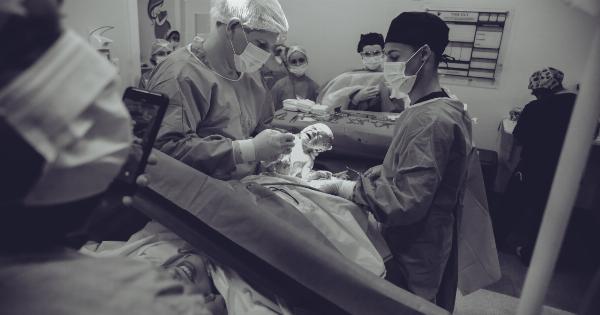Caesarean section, commonly known as C-section, is a surgical procedure performed to deliver a baby. This procedure involves making an incision in the mother’s abdomen and uterus to extract the baby.
C-section may be planned or unplanned and is usually performed when normal delivery poses a significant risk to the mother or the baby or when a vaginal delivery is not possible. C-section can be a life-saving procedure but, like any other surgical intervention, it can have potential risks and complications. In this article, we will explore what changes in a baby during a Caesarean section.
Before the Delivery
Before a C-section delivery, the baby’s heart rate, position, and gestational age are closely monitored. If the baby is in distress, doctors may recommend an emergency C-section to deliver the baby as soon as possible.
Doctors also evaluate the size of the baby to make sure that it can be safely delivered through a C-section.
During the Delivery
During a C-section delivery, the baby undergoes a few significant changes. Firstly, the baby no longer receives oxygen and nutrients from the mother’s placenta through the umbilical cord.
Therefore, it is essential to deliver the baby quickly to avoid any potential hypoxia or oxygen deprivation.
The baby’s heart rate, blood pressure, breathing, and temperature are continuously monitored during the procedure. Anesthesia given to the mother during the C-section can cross the placenta and affect the baby’s breathing and heart rate.
Therefore, steps are taken to minimize the amount of anesthesia administered to the mother. After the baby is delivered, the anesthesia given to the mother is typically reversed to reduce the impact on the baby.
The way a baby is extracted during a C-section can also affect the baby’s condition. A vertical incision in the uterine wall may cause more loss of blood and increase the risk of injury to the baby.
Therefore, doctors typically use a transverse incision in the lower part of the uterus. This technique helps minimize blood loss and reduces the risk of potential injury to the baby.
After the Delivery
After delivery, the baby is assessed by medical professionals to ensure they are healthy and have no complications.
The baby’s Apgar scores, which evaluate the baby’s appearance, pulse, grimace, activity, and breathing, are checked at one and five minutes after birth. If the baby has any complications, they may be transferred to the NICU (neonatal intensive care unit) for further evaluation and treatment.
The baby’s first cry is essential as it signals that the baby’s lungs are working correctly. During a C-section, the baby’s lung may not expand as fully as during a vaginal birth, which can affect the baby’s first cry.
Therefore, medical professionals may stimulate the baby’s respiratory system by rubbing the baby’s back or suctioning out any mucus or amniotic fluid that may be in the baby’s nose and mouth.
Conclusion
C-section is a surgical procedure that can be performed for various reasons. It is essential to be aware of the potential changes that may occur in a baby during a C-section.
Medical professionals closely monitor the baby’s condition throughout the procedure and take appropriate actions to ensure that the baby is healthy and safe.






























